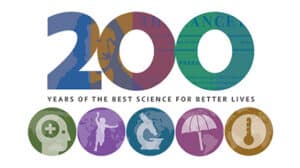Only 20 percent of people in the world carry CCR5-delta 32, a specific mutation that is known to make its carriers almost immune to HIV
A 53-year-old German man has become the third known person ever to be cured of HIV, after receiving a stem cell transplant to treat a rare form of cancer.
The man codenamed “Duesseldorf Patient” was diagnosed with HIV in 2008 and later in 2011 with Acute Myeloid Leukemia – a type of cancer that starts in the blood-forming cells of the bone marrow – following which he underwent a stem cell transplant.
For the transplant, the doctors selected a donor carrying two copies of the CCR5-delta 32 genetic mutation. This specific mutation is known to make its carriers almost immune to HIV. The Duesseldorf Patient continues to remain HIV-free even after four years of not taking the prescribed antiretroviral drugs.
What is HIV?
HIV or Human Immunodeficiency Virus attacks cells that help the body fight infections, thereby making the person more vulnerable to infections and diseases.
It can spread when a person comes into direct contact with the infected person’s bodily fluids such as blood, breast milk, semen, mucus, rectal and vaginal fluids. The disease can also be contracted by sharing needles, syringes, and other medical equipment.
The human body cannot get rid of HIV, as no effective cure is known to exist. The disease, however, is treatable with medicine. If left untreated, HIV may develop into AIDS (Acquired Immunodeficiency Syndrome), which wreaks havoc on the patient’s immune system.
What is CCR5?
Our body consists of CD4 immune cells, also called helper T cells because they help the body fight infection by triggering the immune system to destroy external elements such as viruses and bacteria.
These immune cells are lined with CCR5 receptors on their surface. The HIV attacks these CD4 immune cells via the CCR5 receptors and reduces a person’s ability to fight off secondary infections.
What does the CCR5 mutation do?
The CCR5-delta 32 mutation prevents the CCR5 receptors from forming on the surface of the CD4 immune cells, thereby eliminating the path of HIV. People having this mutation are said to be almost immune to the HIV.
However, not many people carry this mutation. Only 20 percent of people in the world carry one copy of the mutation, out of which a majority are known to be of European descent. And only one percent of the people in the world carry two copies of the mutation.
Who are the other two patients?
Timothy Ray Brown, codenamed ‘Berlin patient’, was the first person to have been cured of HIV after he underwent stem cell transplants in 2007 and 2008 for his blood cancer. He remained HIV-free for approximately twelve years until he died in 2020. In 2019, researchers discovered another patient, Adam Castillejo in London, who also underwent a transplant for blood cancer.
In 2022, two more similar cases were reported, codenamed ‘The City of Hope Patient’ and ‘New York Patient’ respectively. For the New York patient, doctors performed a dual stem cell therapy by using stem cells from the umbilical cord of a neonate and combining it with the stem cells of an adult.
Both patients are currently in remission. The patients cannot be declared as cured yet as in the medical fraternity, a patient is deemed cured of HIV after he has been HIV-free for at least five years. However, the doctors are hopeful that the list of patients cured of HIV will continue to grow.
Way forward
While these recovery stories raise hope, we are still far from finding a sure-shot way of curing people with HIV.
The CCR5-delta 32 mutation used in these stem cell transplants is rare. This hampers the process of finding suitable donors for all HIV patients, especially in those countries that have a very high caseload of patients. Besides, a bone marrow or stem cell transplant is a perilous procedure which means that not every HIV patient can be made to undergo a stem cell transplant as a cure for HIV.
The discovery of the mutation and its potential to cure people of HIV is an important step forward in our journey to fight the virus. However, we still have a long way to go in finding and ensuring a safe and effective cure for all HIV patients.
Also Read: Dar-es-Salaam Declaration: 12 African countries vow to eradicate AIDS by 2030


















Add Comment